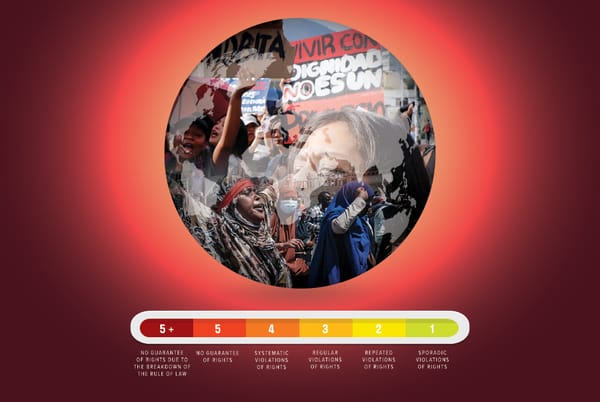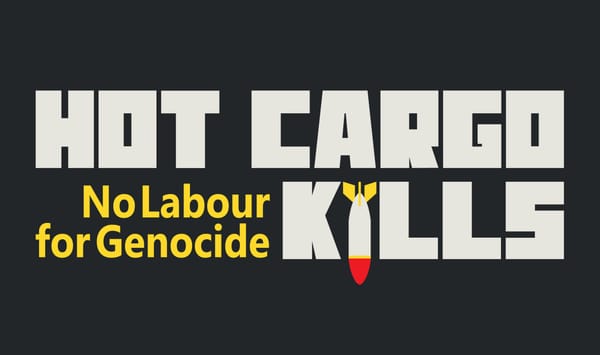
The federal government tabled Budget 2022 in the House of Commons Thursday afternoon. While much anticipated, very little about this budget was left to speculation or surprise. In part because of the recent supply and confidence agreement between the Liberals and the federal NDP, many of the big ticket items were known well in advance.
To a certain extent, this is a budget from a government in no rush. The Liberals have secured their minority government through 2025 in exchange for a number of commitments that won’t see the light of day for some time. Although the top NDP priority this year — the first phase of the public dental care program — made the cut, very little else from the New Democrats’ wish list appears in the budget. In terms of overall spending and investment, the budget seems to fall short of expectations.
The opposition Conservative Party’s initial reaction highlighted this over-anticipation nicely. Predictably, interim Conservative leader Candice Bergen trotted out tired one-liners and stock phrases about “taxing and spending” and inflation-inducing deficits. Yet the Conservatives seemed to have prepared a response for a more lavish budget that was not to be.
In framing Thursday’s budget, the overriding thing to keep in mind is this: Budget 2022 is pivotal because it’s the first “post-pandemic” budget. Since 2020, budgets have, understandably, been largely focused on keeping the economy afloat as we struggled through a global health emergency. We’re largely out of the COVID-19 woods as concerns emergency fiscal stimulus and ad-hoc income support measures — though these were pulled too soon, in my estimation.
By contrast, this budget should be an opportunity to begin to think about rebuilding for the long-term. When looking at Budget 2022, we should be taking stock of the myriad crises that COVID-19 revealed or exacerbated and asking how the government plans to address them going forward. From an overburdened healthcare system, to grotesque levels of inequality and growing precarious employment, to a completely dysfunctional Employment Insurance system, there’s no shortage of pressing issues that a robust budget could seek to address. We should therefore read it as an indication of the government’s level of commitment to addressing Canadian workers’ priorities post-pandemic.
By this measure, how did the Liberals do?
Finance Minister Chrystia Freeland, in her preamble to the budget, sets the tone. As she writes, Canada’s economy has come “roaring back” and now has more jobs and larger real GDP than pre-pandemic. Now is the time, according to the government, to begin a course back to our “proud tradition of fiscal responsibility.” The budget therefore makes a commitment to continue reducing Canada’s debt-to-GDP ratio — the “fiscal anchor” to “ensure that our finances remain sustainable.” She summarizes: “We will review and reduce government spending, because that is the responsible thing to do.”
While not quite a return to pre-pandemic fiscal plans, the budget does nevertheless indicate a lack of boldness and an unwillingness to invest in the social and economic transformations that the times require. At roughly $30 billion in new net spending, Budget 2022 isn’t a plan to patch the gaping holes in Canada’s social fabric revealed by the pandemic. It does, however, offer a few promising elements — things that likely wouldn’t have been there without the NDP supply and confidence agreement.
As expected, the major victory is the government’s commitment to implement a public dental care program, beginning with children under 12 years old this year, expanding to those 18 and under, seniors and persons with disabilities next year, with full implementation by 2025. Budget 2022 provides for $5.3 billion over five years, and $1.7 billion ongoing, to begin phasing in dental care. The program will be restricted to families with an income of less than $90,000 annually, with no co-payments for families earning under $70,000.
That dental care will be an income-tested, non-universal expansion of the welfare state is disappointing. there’s no getting around it. Universal public programs encourage solidarity and are more sustainable in the long-term. At present, the political fortitude to tax higher-income earners to fund universal public services is sorely lacking. Let’s hope this initial public dental program is the foothold necessary to fight for a fully universal version down the road.
Other areas of health spending fared much less well. Pharmacare will have to wait until 2023, as was expected. Emergency health transfers to the provinces during the pandemic helped in the fight against COVID-19 but could not undo the impact of years of austerity, particularly for hospital capacity. Budget 2022 sets aside money to address surgery backlogs, but problems of long-term health funding remain largely unaddressed. The crisis in long-term care, appallingly, goes completely unremarked upon.
While the budget makes much of its housing plan, there is in fact little to inspire confidence. A third of new spending is directed at housing, yet the proposals planned will do very little to address unaffordable housing. The government frames Canada’s housing crisis as a matter of insufficient supply. In select areas of the country this is true, but the primary driver of the housing crisis continues to be the fact that we treat housing as a profit-generating asset — with all the economic and social perversions this entails — rather than an essential human need.
As usual, the Liberals remain much more focused on expanding home ownership than on addressing affordability for renters. Perhaps the central proposal on this front is a new “tax-free first home savings account.” This will function in much the same fashion as an RRSP, allowing prospective home-buyers to make up to $40,000 in tax-deductible contributions toward a first home. The government estimates this initiative will provide $725 million in support over the next five years.
There are, however, a host of problems with this approach. For starters, these types of tax-free savings accounts are inherently regressive — the more disposable income you have, the more you benefit. This hardly seems like a way to address housing unaffordability and inequality. Additionally, the plan will potentially exacerbate the problem it seeks to solve. Tax-free savings accounts will mean more money potentially chasing a restricted housing supply. If supply really is the problem — as the government claims — then more tax-free down payment savings is definitely not a solution.
Budget 2022 will create a “housing accelerator fund” of $4 billion over five years, available to municipalities to support housing development. A portion of this new housing is supposed to be “affordable.” The budget will also provide $1.5 billion to extend the “rapid housing initiative,” which is expected to result in a further 6,000 affordable housing units. These are pretty underwhelming plans given the scale of the problem. There will also be a one-time $500 payment available to those struggling with “housing affordability” in 2022-23 … That oughta do it.
It’s difficult to say which section of the budget is more disappointing though, the portion dealing with housing or the lack of serious spending commitments to tackle the climate crisis.
As has been clear for some time, the Liberals remain committed to scientifically questionable carbon capture, utilization and storage (CSUS) technologies as a way to reduce emissions. This budget proposes an investment tax credit — essentially a subsidy that will go to high-emitting corporations — to incentivize CSUS project investments. A further new tax credit for investments in clean technology hopes to bring private capital investment to “net-zero technologies, battery storage solutions, and clean hydrogen.”
The government continues to forgo the robust public investment and regulation necessary to meaningfully address the climate crisis while courting private investment with various incentive schemes. As the budget remarks: “While public investment can provide some of the capital required to support the net-zero transition, the massive spending power of the private sector—both in Canada and around the world—will play a vital role in the transition to a low-carbon global economy.”
The mechanics of this can become overly complicated, but it’s actually pretty straightforward: At the end of the day, capitalists invest only where they can turn a profit. Much of the time, polluting remains profitable while long-term projects to avert climate disaster are not. Waiting around for the private sector to decide it’s in their interest to invest in fighting climate change is a recipe for failure.
In the area of taxation, Budget 2022 makes good on its promise to tax banks and insurance companies to help pay the cost of pandemic supports. A temporary Canada Recovery Dividend will tax banks and life insurers at a rate of 15 per cent on income above $1 billion for the 2021 tax year. The corporate income tax rate for these businesses will also permanently increase from 15 to 16.5 per cent on income above $100 million. Together, these tax increases are projected to raise $6.1 billion over five years, and roughly $445 million ongoing in the case of the latter permanent increase.
While a positive step, much more could have been done to pay down the cost of pandemic supports for workers and their families. For example, instead of continuing to lavish the fossil fuel industry with inefficient subsidies while it price-gouges during a war, a similar windfall profits tax could have been levelled against oil and gas companies. (For additional ideas about how to make the rich pay, see here and here.)
Unfortunately, the budget commits, as was known well in advance, to roughly $8 billion in new defence spending. While specifics are sparse in the budget itself, significant investments in NATO commitments and NORAD are outlined. There’s also an additional $500 million in “lethal and non-lethal” aid to Ukraine.
The NDP — to much criticism — signalled that they were willing to accept this in exchange for domestic social spending on their priority items. While certainly not a welcomed development for anyone concerned with international peace, this defence spending increase could have been a lot worse given the hawkish rhetoric we’ve heard since Russia’s invasion of Ukraine. It is, however, remarkable to witness the ease with which the commentariat accepts increased spending on weapons of war while fretting about the fiscal consequences of ensuring poor children can get their teeth checked.
While not returning the country to a period of austere spending restraint just yet, the Liberals appear nevertheless to have heeded some of the message of an increasingly unhinged business community that apparently thinks the government is made up of a bunch of rabid socialists. A renewed focus on economic growth and innovation and a rather tepid approach to tax “fairness” are indications — though not out of the ordinary for the Liberals.
As the first test of the Liberal-NDP agreement, the budget gets a pass, but barely. NDP leader Jagmeet Singh’s response immediately following Freeland’s tabling in Parliament said as much. The budget contains items worth celebrating and, in the case of dental care, creates a base program from which to fight for much more. This should have been a pivotal budget that invests in the future for workers and the planet. But that fight will play out over much longer than a single budget.







